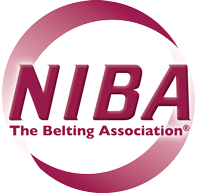Want to submit your own news?
Shanghai MIUKI Automation Equipment Co., Ltd.

Elon Musk's Conveyor Belt Production Philosophy
“Production systems are like conveyor belts; they need to be as efficient and seamless as possible,” said tech giant Elon Musk when discussing the rocket production process. He compared rocket production to the assembly line conveyor belt, emphasizing the importance of production efficiency and automation.

Looking back, the conveyor belt was almost the “perpetual motion machine” of the industrial era, present everywhere from mines to production lines. However, interestingly, the story of the conveyor belt was not initially linked to busy assembly lines, but rather began in a dusty coal mine.
The story dates back to the late 19th century, during the height of the Industrial Revolution. However, coal transportation remained a major headache for miners. A large amount of coal had to be carried manually every day, which was not only inefficient but also physically exhausting. At this point, a young engineer named Thomas Robbins had an ambitious idea: Could a “self-moving conveyor” replace human labor? An idea suddenly struck Robbins, and he began to work on designing a belt that could “move on its own.”
Initially, his design was not successful. Rubber was too soft, and the belt couldn’t bear the weight of the coal; metal chains were too hard and wore out quickly. Just when he was about to give up, an inconspicuous inspiration made him excited: “Why not try a combination of rubber and canvas?” This idea turned out to be the breakthrough he needed. His first practical conveyor belt was successfully launched, greatly increasing coal mining efficiency and laying the groundwork for the birth of the modern assembly line.

Robbins’ invention quickly spread from mines to factory assembly lines. In the early 20th century, American automotive giant Henry Ford took full advantage of the potential of the conveyor belt. He used it to manufacture cars, increasing production efficiency several times over.

(Photo of the Ford assembly line in the early 20th century)
It can be said that the conveyor belt not only propelled the rise of industry but also revolutionized human life—whether it’s every machine in the factory, airport baggage handling, or every slice of pizza we eat, the conveyor belt plays a silent yet crucial role.
MIYUKI Belting will proudly launch its fire-retardant-grade extra-wide 4-meter conveyor belts next year—curtain belts—to provide customized and refined services to various industries and equipment manufacturers. We will also introduce our “Little Blue Belt” to make a modest contribution to the food industry.

MIYUKI Belting—Never Defined!
Below are the core product specifications for the 4-meter line: Curtain Belts, Carbon Chain Belts, and Printing and Dyeing Belts.
MP21-47I is a hot-selling curtain belt with a working temperature range of -10°C to +80°C. The 1% elongation force is 10N/mm. It has excellent flatness and outstanding light-shielding performance, virtually eliminating reflection under natural light, effectively reducing glare.
Model | Material | Fabric Layer (ply) | Color | Pattern | Belt Thickness (mm) | 1%Elongation (N/mm) | Working Temperature (℃) | Minimum Roller Diameter (mm) | Weight (kg) | Maximum Width (mm) |
MP21-47I | PVC | 2 | Gray | Texture Fabric | 1.9 | 10 | -10/+80 | 30 | 2.1 | 4000 |

MU22-34/021AI Carbon Curtain Belt stands out for its stable structure, excellent wear resistance, and weather resistance. Its high conductivity makes it particularly suitable for precision operations in the electronics industry. The matte surface design effectively reduces light reflection and visual fatigue, thereby enhancing work comfort. Additionally, in the textile industry, this conveyor belt, with its outstanding anti-static properties, effectively prevents sparks caused by static electricity, providing a reliable guarantee for safe production.
| Model | Material | Fabric Layer (ply) | Colour | Pattern | Belt Thickness (mm) | 1%Elongation (N/mm) | Working Temperature (℃) | Minimum Roller Diameter (mm) | Weight (kg) | Maximum Width (mm) | Anti Static |
| MU22-34/021AI | PU | 2 | Black | Matte | 1.25 | 10 | -0.25 | 15 | 1.3 | 4000 | 10 |

MU29-36/0AIFL Printing and Dyeing Belt is known for its high strength, oil resistance, and wear resistance, making it particularly suitable for the high-efficiency demands of the printing and dyeing industry. Its flatness ensures stability during fabric transportation, significantly improving production efficiency. Additionally, the belt has excellent anti-elongation properties, making it resistant to stretching and deformation after prolonged use, ensuring stable operation and a longer service life for equipment. The matte surface design effectively prevents glare, reducing light reflection, and creating a more comfortable working environment for operators, further optimizing work performance.
| Model | Material | Fabric Layer (ply) | Colour | Pattern | Belt Thickness (mm) | 1%Elongation (N/mm) | Working Temperature (℃) | Minimum Roller Diameter (mm) | Weight (kg) | Maximum Width (mm) |
| MU29-36/0AIFL | PU | 2 | Black | Matte | 2.6 | 105 | -0.25 | 80 | 3 | 4000 |

Gallery

